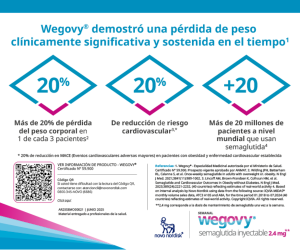Symposium: Iris's pregnancy. Β cell function after pregnancy, prevention of T2D, lifestyle and / or pharmacological intervention
DOI:
https://doi.org/10.47196/diab.v55i3Sup.502Keywords:
gestational diabetes, prevention, postpartumAbstract
Gestational diabetes mellitus (GDM), defined as any degree of glucose intolerance with onset or first recognition during pregnancy, is characterized by underlying maternal defects in the β-cell response to insulin during pregnancy.Women with a previous history of GDM have a greater than 7-fold higher risk of developing postpartum diabetes compared with women without GDM. Various risk factors for postpartum diabetes have been identified, including maternal age, glucose levels in pregnancy, family history of diabetes, pre-pregnancy and postpartum body mass index, dietary patterns, physical activity, and breastfeeding.Genetic studies revealed that GDM shares common genetic variants with type 2 diabetes.
A number of lifestyle interventional trials that aimed to ameliorate modificable risk factors, including diet, exercise, and breastfeeding, succeeded in reducing the incidence of postpartum diabetes, weight retention, and other obesity-related morbidities.
The Diabetes Prevention Program (DPP) is a representative multicenter randomized interventional trial that aimed to demonstrate that either intensive lifestyle(ILS) modifications or metformin could prevent the development of diabetes in high-risk men and women with impaired glucose tolerance. Over 10 years, women with a history of GDM assigned to placebo had a 48% higher risk of developing diabetes compared with women without a history of GDM. In women with a history of GDM, ILS and metformin reduced progression to diabetes compared with placebo by 35% and 40%, respectively. Among women without a history of GDM, ILS reduced the progression to diabetes by 30%, and metformin did not reduce the progression to diabetes. Systolic and diastolic blood pressure and triglyceride levels were also lower in subjects who underwent lifestyle modifications. Breastfeeding provides benefits to both the mother and her offspring. Breastfeeding > 3 months reduced postpartum diabetes by 46% in a German study.Other interventios stydies like The Troglitazone in Prevention of Diabetes (TRIPOD) study and the Pioglitazone in Prevention of Diabetes (PIPOD) study demostrated anincidence rate of diabetes of 4.6% per year, which was considerably lower than the diabetes rate for the placebo group.
Although we know that prevention of diabetes is possible, in clinical practice, the loss of women with GDM to follow-up evaluations after delivery is problematic. The majority of women with GDM understand the association between GDM and postpartum diabetes but do not perceive themselves at increased risk of developing diabetes. Postpartum diabetes screening rates range from 19% to 73%, which are generally poor compared with expectations.
References
I. Moon JH, et al. Prevention of type 2 diabetes mellitus in women with previous gestational diabetes mellitus. Korean J Intern Med 2017; 32:26-41.
II. Knowler WC, Barrett-Connor E, Fowler SE, et al. Reduction in the incidence of type 2 diabetes with lifestyle intervention or metformin. N Engl J Med 2002; 346:393-403.
III. Diabetes Prevention Program Research Group, Knowler WC, Fowler SE, et al. 10-Year follow-up of diabetes incidence and weight loss in the Diabetes Prevention Program Outcomes Study. Lancet 2009; 374:1677-1686.
IV. Tanase-Nakao K, et al. Potential protective effect of lactation against incidence of type 2 diabetes mellitus in women with previous gestational diabetes mellitus: A systematic review and meta-analysis. Diabetes Metab Res Rev 2017; 33:e2875.
Downloads
Published
Issue
Section
License
Copyright (c) 2021 on behalf of the authors. Reproduction rights: Argentine Diabetes Society.

This work is licensed under a Creative Commons Attribution-NonCommercial-NoDerivatives 4.0 International License.
Dirección Nacional de Derecho de Autor, Exp. N° 5.333.129. Instituto Nacional de la Propiedad Industrial, Marca «Revista de la Sociedad Argentina de Diabetes - Asociación Civil» N° de concesión 2.605.405 y N° de disposición 1.404/13.
La Revista de la SAD está licenciada bajo Licencia Creative Commons Atribución – No Comercial – Sin Obra Derivada 4.0 Internacional.
Por otra parte, la Revista SAD permite que los autores mantengan los derechos de autor sin restricciones.




























